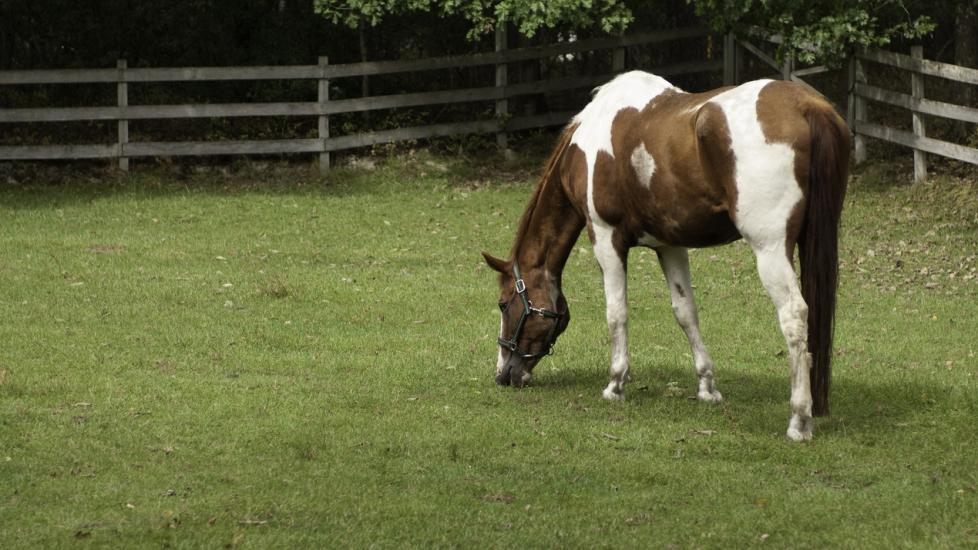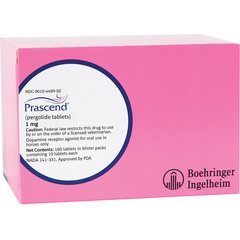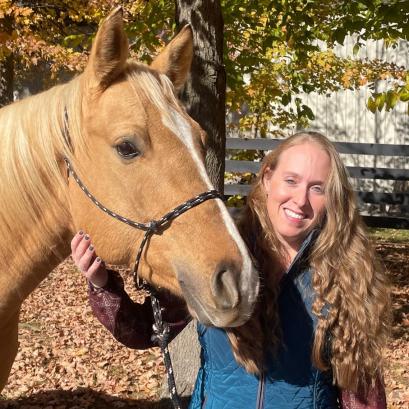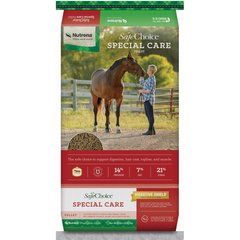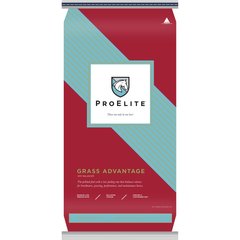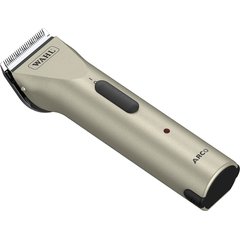Cushing’s Disease in Horses
iStock/Spiritartist
Cushing’s disease in horses, also known as pituitary pars intermedia dysfunction (PPID), is the most common endocrine disorder diagnosed in equines.
Key Takeaways
- Cushing’s disease is a progressive disorder in horses that affects the pituitary gland.
- Cushing’s in horses ultimately causes the adrenal glands to produce more cortisol.
- Horses with Cushing’s disease may have underlying conditions such as equine metabolic syndrome.
- Treatment for Cushing’s disease in horses is an FDA-approved tablet called Prascend® (pergolide).
What Is Cushing's Disease in Horses?
Cushing's disease in horses is a progressive disorder of the pituitary gland—part of the endocrine system which plays a vital role in hormone production and regulation. Dysfunction in the endocrine system can have negative widespread effects throughout a horse's body, leading to malfunctioning immune and reproductive systems, poor coat, weight issues, and other symptoms we’ll discuss below.
Although Cushing’s disease in horses carries the same name as a similar disorder that affects dogs and people, the equine version affects a different aspect of the pituitary gland. In dogs, Cushing’s disease is due to an abundance of cortisol (the stress hormone) production by the adrenal glands, which sit just above the kidneys.
How Cushing’s Disease Affects Horses
In horses, Cushing’s disease is usually seen in older animals, when neurons in the hypothalamus in the brain that produce dopamine degenerate.
-
Dopamine acts as a chemical messenger and instructs other glands to increase or decrease production of other hormones.
-
When there is a decrease in dopamine, the pars intermedia portion of the pituitary gland becomes overactive and produces excess adrenocorticotropic hormone (ACTH) and becomes bigger like a benign (non-cancerous) tumor.
-
Higher levels of ACTH then tell the adrenal glands to increase production of hormones like cortisol.
All horse breeds can be diagnosed with equine Cushing’s disease, but ponies and Morgan breeds may be predisposed.
Symptoms of Cushing's in Horses
Cushing’s disease is a progressive disorder. The symptoms may be slow to present but progress with time.
What Are the First Signs of Cushing’s Disease in Horses?
Symptom development can vary from horse to horse. Not every horse with PPID will develop all or even most of these symptoms. The most common signs observed in horses with Cushing’s disease include:
-
Failure to shed winter coat fully, or patchy shedding
-
Long and/or curly coat
-
Behavioral changes
-
Laminitis or multiple laminitis episodes
-
Hoof abscess or recurrent hoof abscess
-
Infertility or lack of normal estrus cycles in a mare
-
Lethargy
-
Accumulation of fat in abnormal areas
-
Loss of topline
Late Stages of Cushing’s in Horses
While some “common” early symptoms can also occur later in the disease for individual horses, typical advanced symptoms of Cushing’s include:
-
More pronounced loss of muscle mass (especially over the back and hind quarters)
-
“Pot-bellied” appearance
-
Increased water intake and urination
-
Repeat or chronic infections
-
Abnormal mammary gland development
-
Suspensory ligament degeneration
-
Recurrent corneal (eye) ulcers
What Causes Cushing's Disease in Horses?
Cushing’s disease in horses is a degenerative disease of the hypothalamus. The hypothalamus is a structure in the brain that controls the production of hormones through communication with the pituitary gland.
In a healthy horse, the endocrine system is a balanced network of structures and organs that work together in a series of feedback loops to produce and regulate hormone levels throughout the body.
In horses with PPID, loss of function in the hypothalamus leads to problems with a region of the pituitary gland called the pars intermedia (PI).
Cushing’s disease is a progressive disorder. The symptoms may be slow to present but will ultimately progress with time.
Normally, the pituitary gland makes hormones that help regulate normal body functions. Equine Cushing’s disease occurs when there is an abnormal growth (benign tumor) in the PI portion of the pituitary gland.
As the tumor grows, it causes the PI to expand. This increases production of a hormone called adrenocorticotropic hormone (ACTH), which then stimulates the adrenal gland to produce more of a hormone called cortisol.
Cortisol is known as the “stress hormone” and controls many important bodily functions, such as blood sugar levels. Excessive and consistent elevated levels of cortisol can lead to problems in horses, such as increased susceptibility to infection, insulin resistance, laminitis, and muscle wasting.
Diagnosing Cushing's Disease in Horses
Your veterinarian will diagnose equine Cushing’s disease through a combination of your horse’s medical history, a physical exam, and diagnostic tests.
There are two main diagnostics tests for PPID: a baseline plasma ACTH concentration and a thyrotropin releasing hormone (TRH) stimulation test.
-
The baseline ACTH test is a simple blood sample that your veterinarian will send to a lab.
-
The TRH stimulation test is also a blood sample, but it requires two blood draws: a baseline sample and a second sample taken after a hormone called thyrotropin is given to your horse intravenously. The second blood sample is collected 10 minutes after the thyrotropin injection. Both samples will then be sent to the lab to compare the ACTH levels in each.
For early symptoms of Cushing’s in horses, TRH stimulation testing is recommended as the first test. Baseline ACTH levels may be falsely negative in the early stages of the disorder.
In the later stages of PPID, or in horses with numerous symptoms, baseline plasma ACTH level testing may be enough to make a diagnosis. Your veterinarian may require your horse to fast for 12 hours before the blood draw.
Other tests your vet may recommended include overnight dexamethasone suppression testing and magnetic resonance imaging (MRI) specific for PI enlargement.
Treatment for Equine Cushing’s Disease
While there is no cure for PPID, daily medication can be administered to address the disease’s symptoms.
The first-line treatment for Cushing’s disease in horses is an FDA-approved tablet called Prascend® (pergolide). Prascend® acts like a synthetic dopamine, which improves regulation of the pars intermedia’s production of ACTH.
Some horses may need to be started on Prascend® gradually, as it can cause a decreased appetite.
Managing Medication for Cushing’s in Horses
Your veterinarian will likely recommend retesting the horse's ACTH levels once the medication is given for one to three months, and then every six to 12 months thereafter.
Routine blood work monitoring is important to make sure the Prascend® dose is effective and that the disease is not worsening. Some horses may need a slightly higher dose over time as the disease progresses.
Recovery and Management of Cushing's Disease in Horses
After a horse is diagnosed with PPID and started on Prascend®, it’s important that the medication is given as prescribed to help regulate ACTH levels; swinging levels can lead to recurring symptoms.
Around one third of horses with PPID also suffer from equine metabolic syndrome (EMS), so if your horse suffers from both, they may need low sugar feeds, dietary or exercise management, or other medications as instructed by your veterinarian.
Feeding a Horse with Cushing’s
Cushing’s disease does not approach all horses equally. In general, horses with PPID will have underlying conditions such as equine metabolic syndrome or are sensitive to starch, so they’ll need to have a specific low non-structural carbohydrate feed or a ration balancer, which offers all the essential nutrients a horse needs with minimal calories.
Selecting an appropriate diet for a horse with PPID and/or EMS should always be done with your veterinarian. Your horse may need a higher or lower fat, carbohydrate, or protein content in their feed, depending on if they are struggling with weight loss or gain, and if they have other metabolic concerns
Horses that have or may be prone to insulin resistance and EMS may need a strictly forage diet or grass with a ration balancer supplemented.
Some feeds that may be a good choice for horses who benefit from a low NSC diet include:
Other senior horses that struggle to maintain weight may require a balanced senior feed, higher calorie feed, or fat supplementation without added carbohydrates.
Omega or antioxidant supplementation can also be beneficial, as horses with PPID often have compromised immune function. Amino acids can also help with loss of topline.
What Not To Feed a Horse With Cushing’s Disease
Horses with Cushing’s disease should usually not be fed any diet high in sugar. Grain should contain less than 10% sugar and starch, and your horse’s hay may need to be analyzed. If the hay sugar and starch level analysis comes back high, their forage will need to be changed or hay must be soaked.
Restricting grass intake is also recommended, especially in the spring and fall when the sugar in grass is at the highest level.
Managing Other Symptoms of Equine Cushing’s Syndrome
In addition to medical treatment with Prascend® for PPID in horses that often have a compromised immune system, routine wellness care is important to minimize the chances of episodes of laminitis, colic, infection, foot abscesses, and others from occurring. This includes:
-
Maintaining an ideal body weight
Many horses with Cushing’s disease will have trouble shedding out their winter coats. You can help your horse feel more comfortable as the temperature rises by body clipping.
Cushing's Disease in Horses FAQs
How long will a horse live with Cushing's disease?
Symptoms of Cushing’s disease in horses often arise around 15 years old or older. Medical management improves quality of life. It does not necessarily prolong lifespan and will vary depending on the horse's overall state of health. Secondary conditions that often occur with PPID like repeat or severe laminitis or infection can lead to systemic illness and premature passing.
What are the first signs of Cushing's disease in horses?
Generally, the first clinical signs with Cushing’s disease are long hair or delayed shedding, abnormal fat deposits, loss of topline muscle, or weight loss and laminitis.
Is Cushing’s disease in horses terminal?
A horse cannot recover from Cushing’s disease, but the condition can be managed and a horse can live a high-quality life with effective treatment.
What happens if Cushing's is left untreated in horses?
Left untreated, Cushing’s disease will continue to progress and will cause the horse's weakened immune system to worsen. It is likely that a secondary condition such as laminitis will result; repeat or systemic infections can cause other serious complications and poor quality of life.
Is there a natural treatment for Cushing’s disease in horses?
While no natural treatments will cure Cushing’s disease or completely resolve symptoms, some alternative methods for PPID may be discussed with your veterinarian. Chaste tree berry (Monk’s pepper) is used for some horses with PPID for its immune-stimulating properties. Adjunct therapy like chiropractic, or acupuncture can also support a healthy immune function and hormonal and neurological balance in the body.
